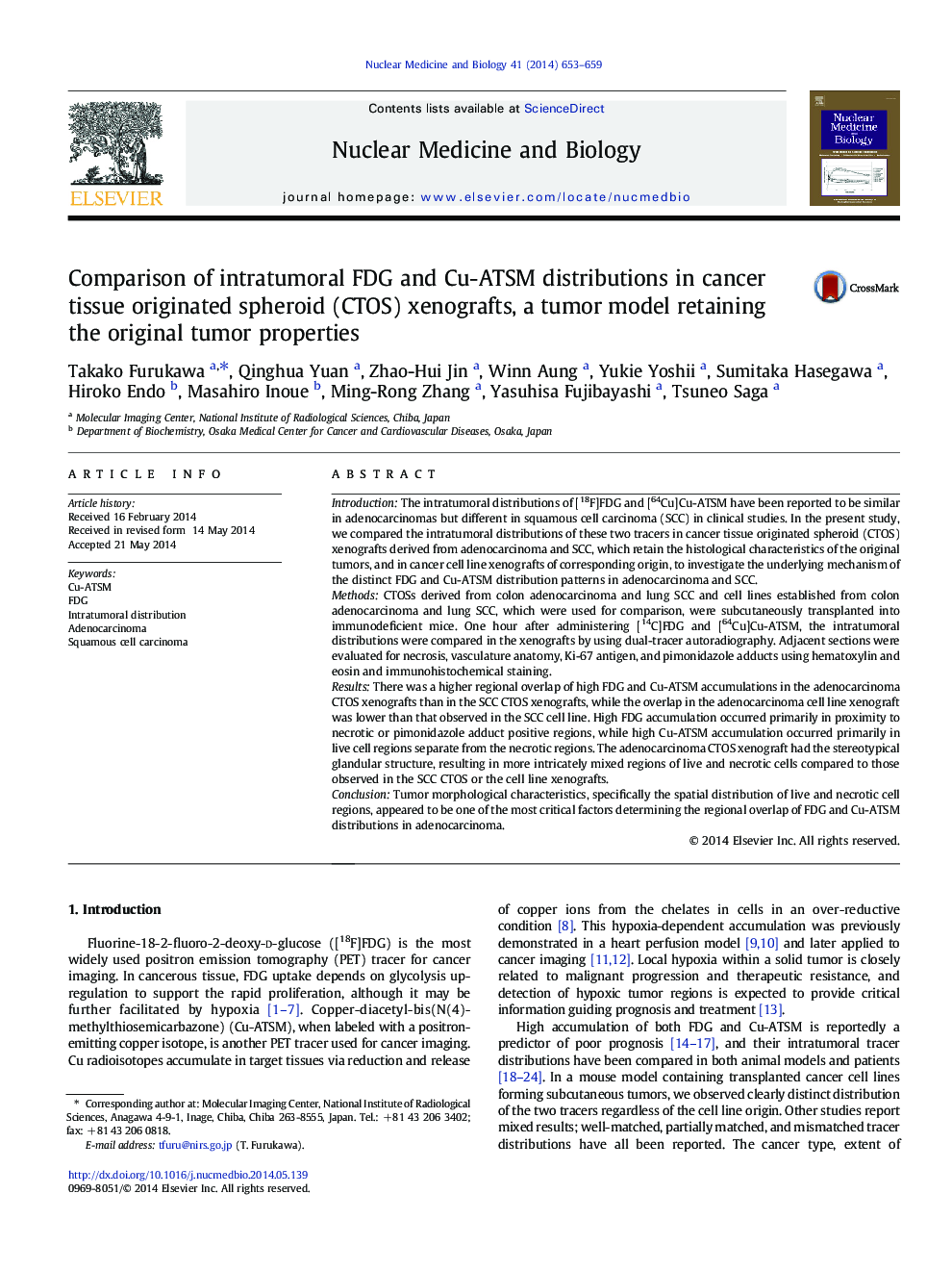| کد مقاله | کد نشریه | سال انتشار | مقاله انگلیسی | نسخه تمام متن |
|---|---|---|---|---|
| 2153507 | 1090192 | 2014 | 7 صفحه PDF | دانلود رایگان |

IntroductionThe intratumoral distributions of [18F]FDG and [64Cu]Cu-ATSM have been reported to be similar in adenocarcinomas but different in squamous cell carcinoma (SCC) in clinical studies. In the present study, we compared the intratumoral distributions of these two tracers in cancer tissue originated spheroid (CTOS) xenografts derived from adenocarcinoma and SCC, which retain the histological characteristics of the original tumors, and in cancer cell line xenografts of corresponding origin, to investigate the underlying mechanism of the distinct FDG and Cu-ATSM distribution patterns in adenocarcinoma and SCC.MethodsCTOSs derived from colon adenocarcinoma and lung SCC and cell lines established from colon adenocarcinoma and lung SCC, which were used for comparison, were subcutaneously transplanted into immunodeficient mice. One hour after administering [14C]FDG and [64Cu]Cu-ATSM, the intratumoral distributions were compared in the xenografts by using dual-tracer autoradiography. Adjacent sections were evaluated for necrosis, vasculature anatomy, Ki-67 antigen, and pimonidazole adducts using hematoxylin and eosin and immunohistochemical staining.ResultsThere was a higher regional overlap of high FDG and Cu-ATSM accumulations in the adenocarcinoma CTOS xenografts than in the SCC CTOS xenografts, while the overlap in the adenocarcinoma cell line xenograft was lower than that observed in the SCC cell line. High FDG accumulation occurred primarily in proximity to necrotic or pimonidazole adduct positive regions, while high Cu-ATSM accumulation occurred primarily in live cell regions separate from the necrotic regions. The adenocarcinoma CTOS xenograft had the stereotypical glandular structure, resulting in more intricately mixed regions of live and necrotic cells compared to those observed in the SCC CTOS or the cell line xenografts.ConclusionTumor morphological characteristics, specifically the spatial distribution of live and necrotic cell regions, appeared to be one of the most critical factors determining the regional overlap of FDG and Cu-ATSM distributions in adenocarcinoma.
Journal: Nuclear Medicine and Biology - Volume 41, Issue 8, September 2014, Pages 653–659